Think infrastructures in context: human ecosystems - by Bahanur Nasya
Edited on
04 March 2022We often wonder why some infrastructure projects are loved and cherished by citizens while others aren’t. It’s not only the quality of the project that determines its success but the acceptance it receives from citizens as well. Change is often only possible when a community gets behind a project, owns the solutions, lives the change and actively adopts the proposed solution to their reality. However, community-led solutions are difficult to achieve, especially if the proposed solution is too new and has little grassroots support. The mechanisms of ecosystem building come in useful under such circumstances to help yield positive involvement.
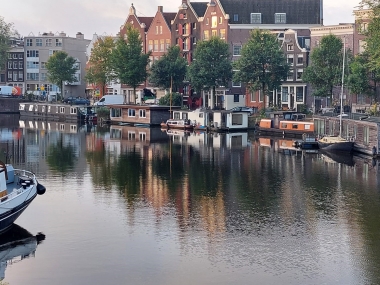
RiConnect is an Action Planning Network consisting of eight metropolises focusing on the improvement of mobility infrastructures. These eight metropolitan areas all want to reconnect people with urban and natural spaces. They would like to foster use of public transport and promote active mobility by reducing externalities and social segregation, especially when the inclusion of local actors is crucial for urban regeneration processes, spatial and process designs. During the webinar held on September 22, 2021 by the RiConnect Action Planning Network (APN), we discussed three different layers of local ecosystems, which can support the action plans of the participating cities. The goals of these actions need to address social objectives to ensure that citizens support the process. The proposed action can only become successful if it garners popular support, which is solely possible if it somehow improves social life on site and offers citizens benefits.
In order to achieve such a goal, we proposed to examine the level of economic development, social cohesion and gender equality in the communities of the RiConnect cities. These criteria are significant and telling layers of our urban tissue; they can ensure an increase of public life activities, boost the availability of local jobs and opportunities, contribute to city wide access, increase administrative income streams, broaden levels of diversity and safety, and improve societal wellbeing. Such improvement would place the infrastructure and environmental mobility projects of RiConnect in a very positive light, consequently garnering an increase in local support for the projects. Yet, these topics were not found to be placed at the core of local action plans, even-though local coalitions in these fields can have significant impact. Enclosed is a quick look on the visions of the participating cities for their planning area.
Site and metropolitan area | Vision |
Kodra MDAT - Major Development Agency Thessaloniki (GR) | To transform Kodra ex-military Camp sustainably, while conserving its natural resources, as well as historical and cultural heritage. The team aims for social equality and economic prosperity in their project. |
Arranha AMP - Porto Metropolitan Area (PT) | Make “Arranha” a pleasant place to live and work. Connect the territory around the circular road around the city and make it more cohesive, green, inclusive, and sustainable. |
Avinguda del Vallès AMB - Barcelona Metropolitan Area (ES) | Avinguda del Vallès is the new civic, green, and business axis which connects Montcada, Cerdanyola, Ripollet and Barberà. Public transport and active mobility at its core, the tree-lined avenue will link public spaces with different qualities to a continuous corridor. |
Lelylaan VA - Vervoerregio Amsterdam (NL) | The area around the station Lelylaan will be a vibrant area where the older urban identity will be preserved but adding a boost of liveliness and fresh impetus. There will be an increase in functions around the train station, it will become an attractive area and gathering place. |
OdkorkujMYHEL OMGGS - Gdansk-Gdynia-Sopot Metropolitan Area (PL) | Hel Peninsula will become a friendly and safe space, with a good transport system. |
Livry-Gargan MGP - Greater Paris Metropolis (FR) | The future neighbourhood will be organised around streets dedicated to different ways of transportation and allow mixed-use and include housing, different economic activities, as well as shops and facilities. |
Skawina KMA - Krakow Metropolis Association (PL) | Improving the quality of life of inhabitants and passengers by connecting the train station to the centre of Skawina, with multifunctional areas. |
Oldham TfGM - Transport for Greater Manchester (GB) | Acting in a peripheral centre with bus and tram connections, in order to improve infrastructure integration and enhance social life and retail. |
Citizens rarely have mobility patterns that place their movements from one concrete point to another (i.e. point A to B). Daily commuters generally find themselves in need of travelling to and through multiple destinations. Especially when given that today’s busy lifestyle requires picking something up the way to work, meeting someone along the way for a quick coffee or break, travelling to various locations or stopping by shops in between. This makes it necessary to include a holistic approach in mobility planning, to ensure that proposed novelties facilitate a range of activities and allow citizens to utilise combined routes. Given the current gender based structures in our society, women are more likely to take on more multi-destination trips than men. Improving their routes and rides with public transportation, streets and ways will thus create a long-lasting impact. First, this is because women predominantly raise the kids or deal with their daily issues and schedules, which requires bringing them along on trips or dropping them off; and secondly, men also combine various tasks to take care of on their routes (including tasks involving children) - and we can support gender equality in our societies by promoting and offering multi-destination options to all, so that all members of the society can take on various responsibilities because they are combineable and achieveable.
We generally prefer to have a more general approach when creating a design, and aim to ensure our concepts can offer solutions for all. This is the achilles heel of urban planning, because by failing to address a specific group and their needs, we end up creating a general concept that fails to inspire individuals or groups to feel empowered and/or take ownership of the implementation. The first step to begin a dialogue with citizens groups is by addressing them directly, recognising their needs and sharing out activities with them, thus creating an effective difference in the co-creation approach. Being specific can not only help with the communication but also help us determine whom we are missing. Some RiConnect cities already have a disproportioned ratio of a specific user profile type of their projected area. This imbalance can be rectified by designing the places, activities and offers in the area for other gender, ethnicity, age groups etc. Bringing economic activities in transportation hubs can help make the lives for employees and citizens much easier. Enclosed are examples in which urban regeneration was approached and taken on as a local ecosystem, with significant impact on the local infrastructure.
Case | Economy | Cohesion | Gender | Sources |
Stará Tržnica Bratislava (SK) | Entrepreneurship, crafts; Creation of a hub with diverse business | Diverse and small scale entrepreneurs | Empowering female vendors | |
Mar Movilidad Madrid (ES) | Connecting initiatives to form companies | Creating work opportunities and making marginal viewpoints visible | Engaging with female entrepreneurs | |
Afrikaanderwijk Cooperative Rotterdam (NL) | Activating dormant resources (skills, culture,...) | Supporting vulnerable groups (85% migrant background) | Empowering unemployed women | |
Magda’s Hotel Vienna (AT) | Combination: tourism and refugee empowerment | Training of newcomers | Project managed by women | |
CoSto Paris (FR) | Enabling small business owners to increase their competitiveness | Supporting local commerce as a social net | Empowering female vendors and customers with home delivery services |
The enclosed inspirational cases are from different European contexts and can inspire RiConnect cities to involve strategic partners in their project. Such collaboration efforts can enhance local impact, garner local support and help gain partners for their endeavours.
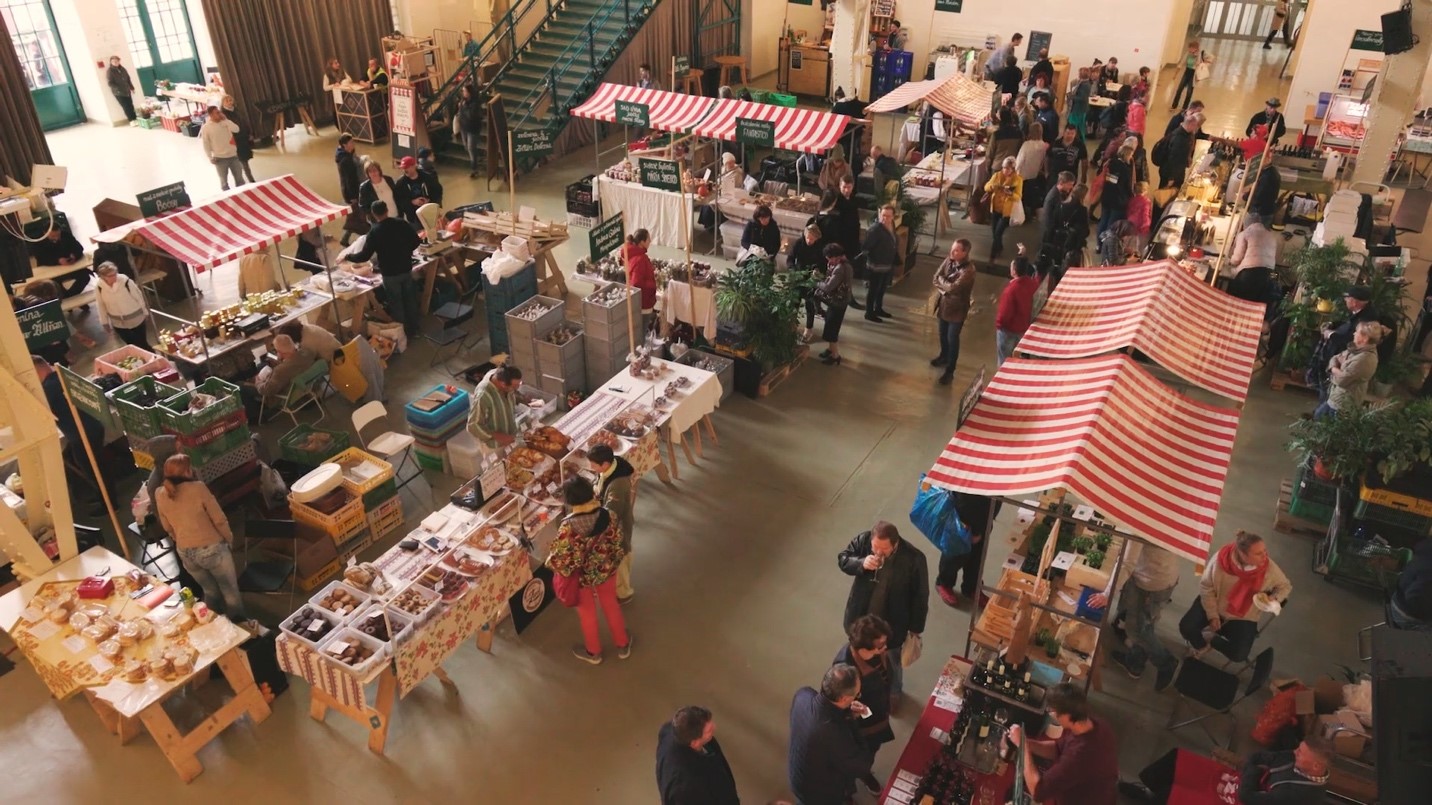
Temporary-use as market © Yilmaz Vurucu
Stará Tržnica
Alianca Stará Tržnica is an NGO managing a historic market hall in the centre of Bratislava in Slovakia. The location is directly connected to the local transportation system, but the area around the market was viewed as being unattractive and seldom visited in the early 2000s. The building is owned by the municipality, but was formerly shut down due to lack of interest in the market and the high operating costs. With a redevelopment plan, which combines a temporary food market with cultural events as well as other commercial activities, the market could be re-opened by the Old Market Alliance. Next to running the building in an economically sustainable way, while gradually renovating it, the project yielded success in activating the space and the neighbourhood in the heart of the city. They combine entrepreneurship and craftsmanship while empowering female entrepreneurs and facilitating social activities.
The Kodra project (MDAT, Thessaloniki) can adopt this model by empowering an intermediate organisation that can operate the park with a balanced concept that combines commercial and social activities, which will liberate the municipality from duties related to maintaining the place and activating or restoring the heritage buildings. In Skawina (KMA, Krakow) this mixed-use-model can be employed in the space in and around the train station. This would allow a pop-up market and the organisation of events and exchange activities on site to play a role in increasing the popularity of the train station and linking it to the other important points in the town. This would also assist promoting train transportation as a viable and popular option for mobility, which would combine all other aspects of public life. In the area around Lelylaan train station (VA, Amsterdam), such an approach could lead to an area management, with multiple options and activities around the station. The place would attract attention, which would allow it to be perceived as being more enjoyable and functional, as well as safer.

Different modes of mobility - rated © Mar Movilidad
Mar Movilidad
MAR Movilidad is the mobility hub of the Mares Madrid project, located in the Spanish capital. Supported by UIA, the project aims to transform the city by focusing on a few neighbourhoods such as Vallecas. The partners work on alimentation, recycling, energy, care and mobility, which is also aptly named MAR Movilidad. The neighbourhood of Vallecas was specifically identified as having promising potential given that local residents have a strong tradition of community activities, resistance, cycling initiatives, recycling and genuinely care about inclusiveness. The Mar Movilidad hub brings active actors together in the city and supports them in their transition to sustainable mobility by evaluating, rating, and improving active mobility options on the ground. The aim is to develop new economic opportunities for the social and solidarity economy, while paying attention to sustainability.
In the Oldham case (TfGM, Manchester), it is very important to identify the local mobility needs and support sustainable modes of transportation group by group. The high load of traffic can be reduced and relaxed by developing incentives for pedestrians or various bike-users, and by empowering other sustainable traffic participants. The action plan of the city can obtain great support and have a significant impact on the short distances in neighbourhoods. In the Avinguda del Vallès project (AMB, Barcelona), having differentiated plans for different modes of mobility can help make the big project more tangible. Active mobility participants can connect, interact and support each other in a sustainable way. Working with specific user groups would increase the chances of citizens changing their mobility habits for good. Multiple modes of transportation also have to be kept in mind in the OdkorkujMYHEL project (OMGGS, Gdansk-Gdynia-Sopot). Land connection to the peninsula is very narrow, which leads to traffic jams. By using different modes of transportation that transport more people per ride; having smaller vehicles such as e-bikes; or increasing opportunities via the waterways, the mobility plan can create enjoyable, reliable and space saving alternatives. The concept needs to be embedded as part of an overarching goal for the area. For instance, the connection of different ports from the mainland to the peninsula, by providing different water transport routes, can also strengthen the connectivity with main land destinations and may offer, especially visitors, with a very different and unique alternative for transportation. In this way, the new offer may be well accepted, instead of resisted as a limitation.

Afrikaanderwijk graphic © freehouseresearchreader
Afrikaanderwijk Cooperative
Afrikaanderwijk Cooperative operates in South Rotterdam’s Feijenoord area in Netherlands. It began as an art project and evolved into becoming a cooperative. They bring together existing workspaces with entrepreneurs, producers, social organisations and the market. The project started with a mapping of the unrecognised skills and competences of residents in the Afrikaanderwijk neighbourhood. The neighbourhood was suffering from problems of low education, unemployment and bad reputation to boot. The cooperative now helps residents use their competencies in the neighbourhood kitchen, the catering company, the textile workshop and the cleaning company. This project especially activates formerly unemployed women in the area and improves their inclusion in public life, making the places more diverse and dynamic.
Connecting the residential areas with opportunities to work is an important task in the regeneration process of neighbourhoods. In Livry-Gargan (MGP, Paris) the awakening of dormant resources such as opportunities for working in residential areas can contribute to short-distance-mobility-patterns, which can decrease the need for motorised transportation and give free valuable street space to pedestrians and bike users. In the Avinguda del Vallès (AMB, Barcelona) mobility by car had a tremendous impact on how communities organised their public life (shopping, leisure, mobility, education…). By awakening dormant resources within the neighbouring municipalities around the Avinguda del Valles, the project could ensure access to essential necessities on a route of shorter distances and via more pleasant routes. A similar path could be relevant for the communities around the round-road in the Arranha project (AMP, Porto). By mapping and activating local actors who can benefit from sustainable mobility, the project can gain significant support and perhaps acquire funding for implementation.
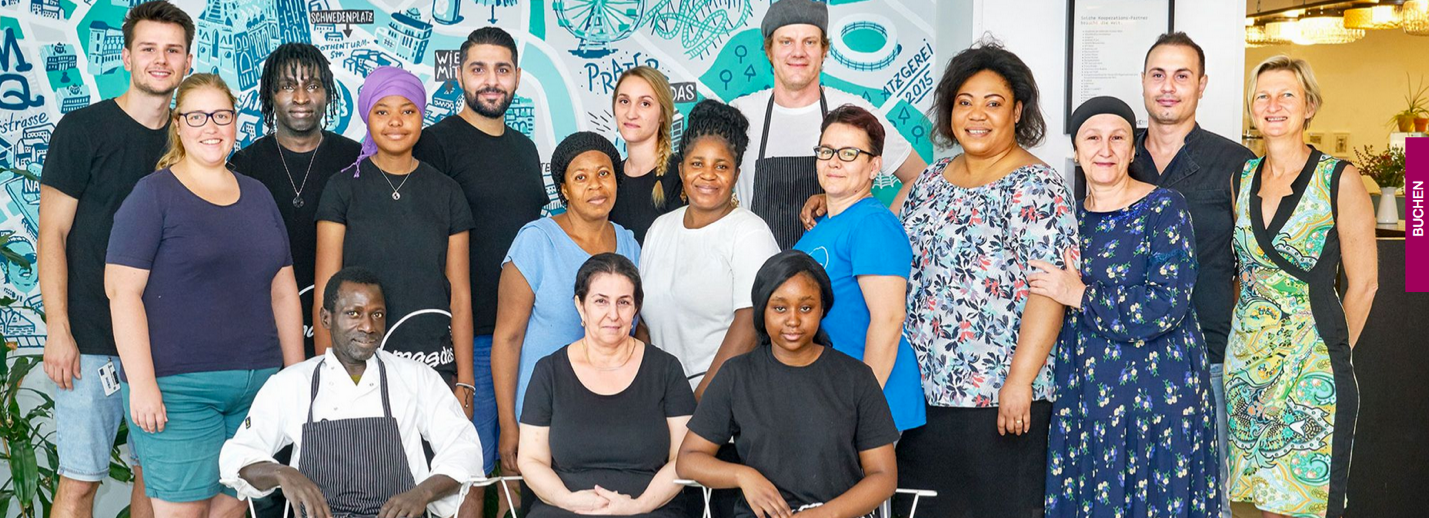
Diverse team ©Magdas
Magdas Hotel
Magdas Hotel is a social business hotel based in Austria’s capital of Vienna. They rely on cooperation, existing resources and a social vision. Refugees, volunteers and professionals of the hotel transformed a former retirement home, located at the Wiener Prater, to a grand budget hotel. The hotel takes integration seriously and has defined programmes for different kinds of people. The hotel trains refugees to acquire skills and competences in the hotel industry, enabling the chance for a multicultural encounter between people, while benefiting from the cultural background of the employees and travellers. Placing tourism under a social umbrella sends valuable messages and is a very important hospitality alternative for national and international travellers. Despite the great impact of the pandemic on the hospitality industry in the city, Magdas is invited for further collaborations across the city because of their inclusive approach.
Magdas uses the social business concept to create new opportunities within the tourism branch. A similar approach could be used by the Arranha (AMP, Porto) team. They could bring some social values and engagement in the shopping centre determined neighbourhood. Also, the mobility transition in the Hel peninsula (OMGGS, Gdansk-Gdynia-Sopot) can make a bold statement by involving vulnerable or underprivileged people in the core of their business. With selected operators of the new water transports, the project can attract attention and improve mobility for everyone. In Kodra (MDAT, Thessaloniki) the model of social inclusiveness could help the project consciously involve people with less means or possibilities. Such a concept could develop the social layer of the project tremendously by ensuring them access, work and (affordable) mobility to the park.
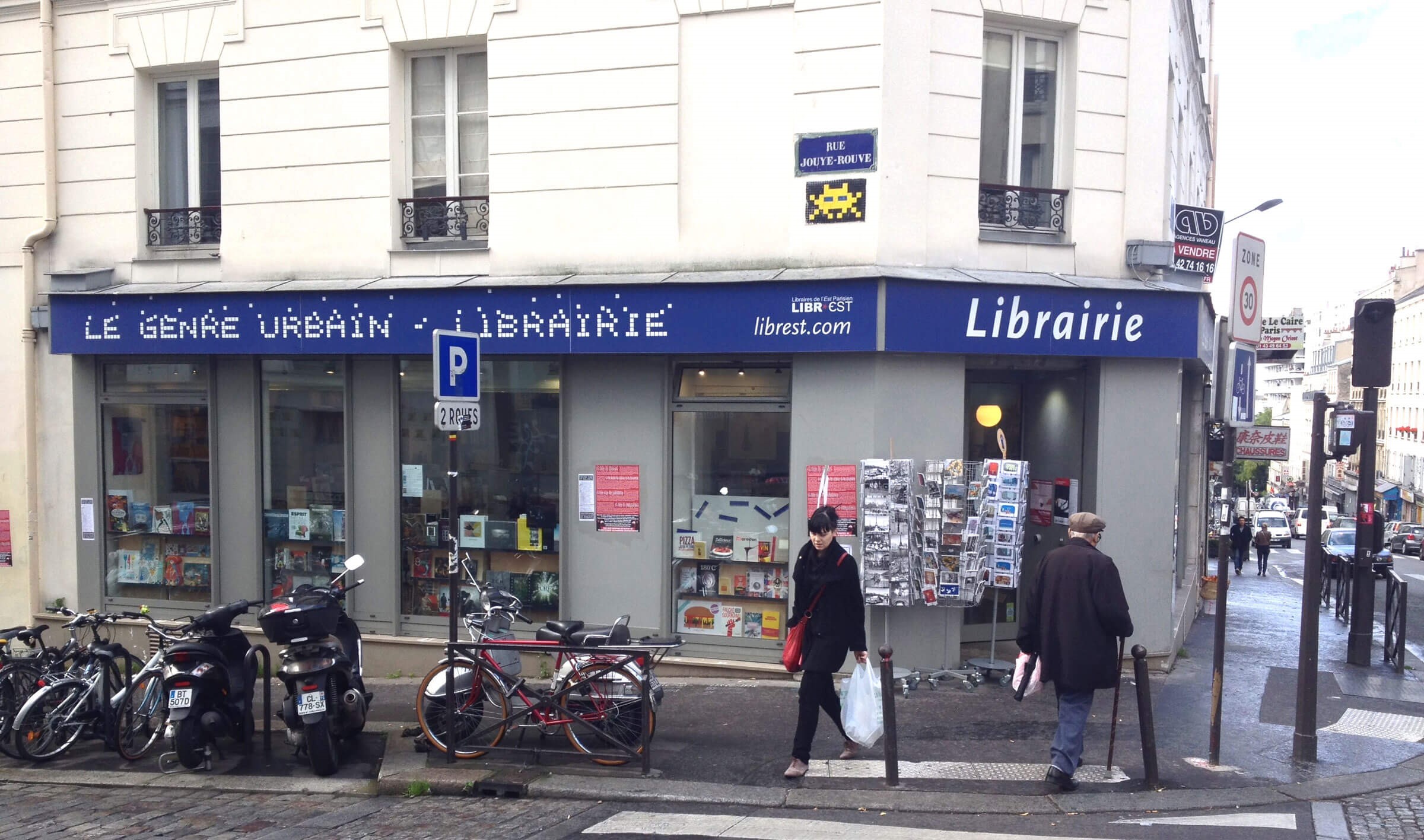
Supported bookshop © Eutropian
CoSto program
SEMAEST is a Parisian semi-public company specialised in commercial revitalisation, operated through the Vital Quartier program in France. It launched the CoSto program, which matches local shopkeepers and ICT startups for new digital retail solutions. The shopkeepers in the CoSto network can test new digital solutions over several months, for free. They can evaluate and observe impacts on their profile and capacity in this trial period. It can ensure the survival of shops while keeping neighbourhoods and communities lively. Young start-ups have the possibility of testing and improving new products based on real demand with the provided tools. Local and international competition continues to become harsher and more challenging, especially with lockdowns during the pandemic, resulting in small businesses urgently needing this kind of an investment and support. Small shops carry great importance for a sustainable mobility program as a place of employment and also as destinations of public life. Short distance activities especially support citizens travelling by foot or those relying on public transport, most of whom are women, kids, minors and the elderly.
In the Hel Peninsula (OMGGS, Gdansk-Gdynia-Sopot) the tourism branch has to keep an eye on local and small entrepreneurs and the interests of the residents of the peninsula. Facilitating their activities with technological and networking support can enhance their capacities - they can grow to an ecosystem with identified stakeholders. This can be strengthened through digital tools, activities that connect them and networking tools to assist them. Similarly, the Lelylaan team (VA, Amsterdam) can benefit from a local alliance between the interest groups in the Lelylaan area. Here, the local development plans foresee new buildings with new inhabitants. A connected local community could be recognised as a stakeholder to negotiate with and co-develop with. Strengthening small shops in Oldham (TfGM, Manchester), can be another way to promote sustainable modes of transportation, which can occupy public space and highlight the urgent need for transitions in the traffic.
The pandemic has had various impacts on our public life, which sometimes, due to lack of alternatives, resulted in favouring car traffic and international retail businesses, with tremendous impact on the lives of especially vulnerable people. By creating a mobility plan that strategically includes social, ecological and economic sustainability, we can embed our ambitions in an overarching framework and ensure a holistic positive impact on the lives of our citizens. Tackling these aspects can contribute to the success of the RiConnect metropolises. Even though the partners of the project are not responsible for all these fields of expertise, they can be initiators on the ground, playing a role in activating the ecosystems around the infrastructure hubs in their metropolitan areas. We believe that keeping the above mentioned examples and potential scenarios in mind can help steer conversations, dialogues and collaborations with local actors. Having actors in these fields as allies in the Action Plans can increase their urgency and perhaps chances of implementation.
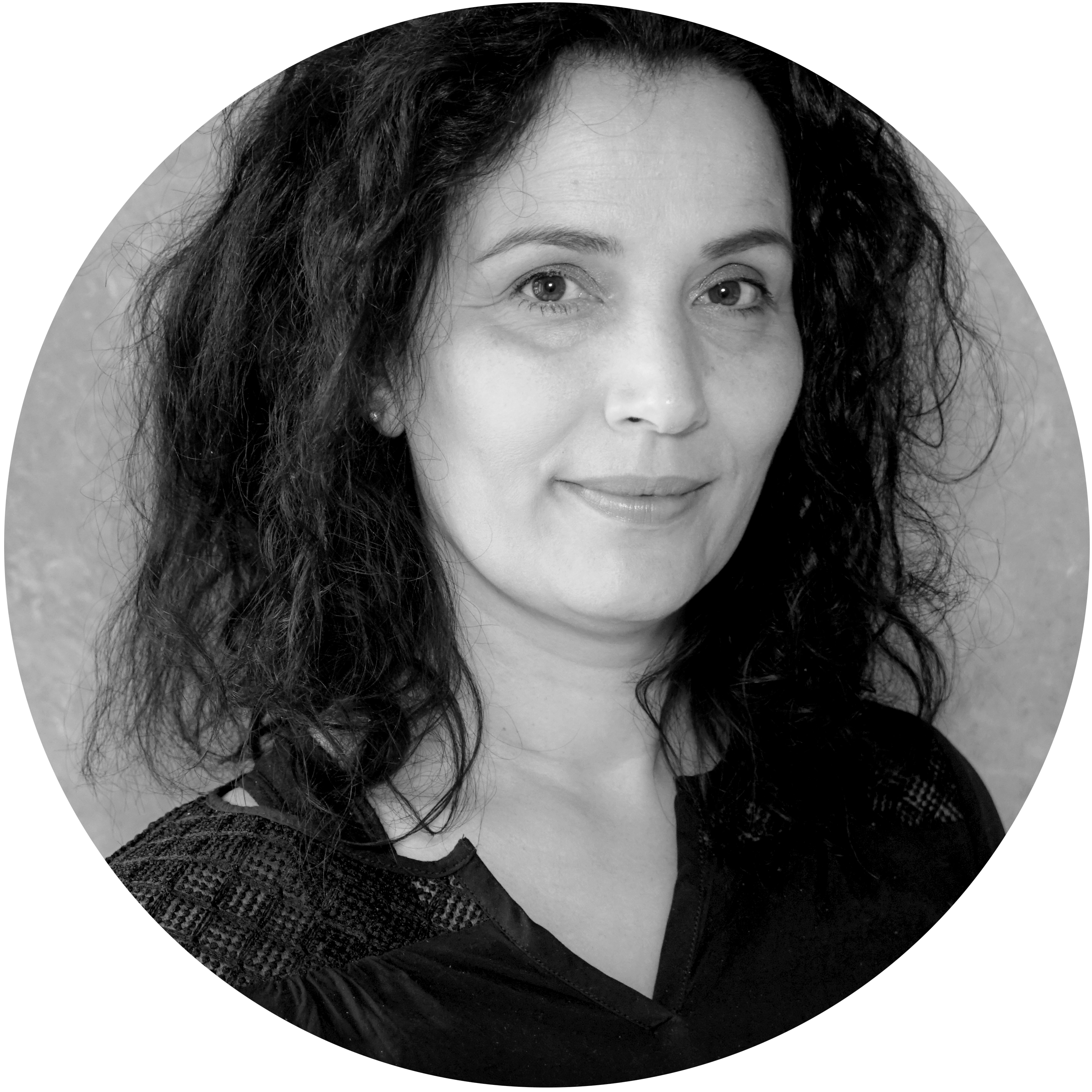 Bahanur Nasya is an architect and film maker with years of experience in international research projects, in the field of urban development and social innovation.
Bahanur Nasya is an architect and film maker with years of experience in international research projects, in the field of urban development and social innovation.
As a project manager in Eutropian, she is conducting many initiatives with special attention to the relationship between environmental and social impacts. In doing so, she has paid special attention to storytelling, either through films or other means. Her expertise has led her to be Leader at Placemaking Europe, Head of Organisations at Wonderland, and chairwoman at Xsentrikarts.
She has also collaborated in RiConnect as an Ad-hoc expert, supporting our partners’ efforts to create Integrated Action Plans that cover the social perspective.
 Submitted by Mikel Berra-Sandín on
Submitted by Mikel Berra-Sandín on
